Automating CI/CD Pipelines for Insurance Industry Applications

Executives in the information technology sector encounter numerous obstacles in their pursuit of continuous application improvement, reduced time to market, improved quality, and effective cost management. To tackle these challenges, various automation solutions such as DevOps, Agile, and continuous integration/delivery have been developed.
The software development landscape has undergone a significant transformation as the world embraces new technologies. Users’ expectations for frequent updates to their favorite products and applications have soared. However, meeting these demands and fulfilling market needs can be challenging for companies with traditional development teams. To overcome this challenge, many companies are adopting automated CI/CD pipelines to augment their development teams and streamline app updates.
Automating the Continuous Integration and Continuous Deployment Pipeline
To facilitate the release of new software, a series of procedures known as a continuous integration and continuous deployment (CI/CD) pipeline is essential. This pipeline manages everything from the software’s initial development phase to its final release.
By automating each stage of the software development process, CI/CD significantly expedites software delivery throughout its entire lifecycle. Although constructing CI/CD pipelines manually and with intensive labor is feasible, the advantages of automating the code movement from development to delivery are far more substantial.
What is the Function of a CI/CD Pipeline?
The main objective of the CI/CD pipeline is to achieve continuous and rapid detection of software defects. This system streamlines the shipping and delivery process, encompassing code construction, testing through continuous integration, and software updates via continuous delivery. Moreover, automated pipelines play a crucial role in minimizing human errors, standardizing development feedback loops, and facilitating rapid product iterations.
The Advantages of a Continuous Integration/Continuous Deployment Pipeline
Impact in Isolation: Developers are assisted in their efforts to maintain and rectify problems through fault isolation, which mitigates the effect of bugs in the code. By employing CI/CD pipelines, defects can be swiftly identified and fixed, leading to more reliable rollouts.
Reduced Downtime: A well-implemented CI/CD pipeline drastically cuts down the mean time to repair (MTTR) of a broken feature as codes are smaller and faults are more easily isolated. This bolsters a company’s ability to anticipate potential risks and recover swiftly in the event of a disaster.
Improved Feature Quality: Continuous integration and continuous deployment enhance the quality of every feature by incorporating test reliability into the CI/CD process. The continuous merging and deployment of code after testing results in quicker release rates, ensuring a more reliable and robust final product.
The Role of Testing Automation in the CI/CD Process
In DevOps, the automated process starts with the development of code, and automated testing solutions and other toolsets are utilized after the code has been released to production. Let’s explore the significance of automated testing in the CI/CD process.
Supports the Growth of Shift-Left Evaluation: A continuous flow of changes in a CI/CD pipeline leads to reduced testing time. Emphasizing shift-left testing, which involves detecting problems early in the requirement collection phase of the Software Development Life Cycle (SDLC), facilitates smoother progress. Fixing defects detected early in the SDLC requires less time, money, and resources compared to addressing issues found later.
Quicker DevOps means a quicker CI/CD pipeline: Automated testing is a critical component of continuous delivery pipelines, and its absence can lead to failures or hinder an organization from fully benefiting from DevOps. By incorporating automated testing, quality assurance in DevOps becomes continuous, reliable, and agile, similar to other aspects of the business. Automation in testing during the transition to CI/CD enhances quality and reveals intermittent problems in the development process.
Efficient Software Updates with Automation Testing in CI/CD Pipeline: The volume of potential issues in a software system can overwhelm even the most diligent continuous delivery pipeline. Constant and rapid attempts to fix issues by the testing team are crucial to prevent the possibility of a contaminated build with troublesome code, affecting the code’s readability and maintainability. Automated testing plays a vital role in preventing delays in production and scheduled build updates. Standardizing DevOps with automated testing is necessary to avoid irregular and ad hoc practices.
Parallel Test Execution for Faster CI/CD Pipelines: Running numerous test cases simultaneously using automated testing is highly beneficial. It allows for roll-backs before outages, providing peace of mind to developers. Running tests in parallel, such as with Selenium using LambdaTest’s parallel testing through the Selenium Grid, significantly reduces test cycles while maintaining full coverage.
Ensuring Working Order of Temporary Test Sites and Staging Areas: Running the test suite in containers with a limited state helps prevent regressive behavior in later iterations. Developers can quickly replicate the settings of containerized testing environments for subsequent CI/CD processes. Containers can be spun up and destroyed without affecting environmental realism. Staging environments, on the other hand, serve as permanent representations of live production environments and are vital for testing modifications before release.
Conclusion:
To keep up with the rapid demands of modern SDLC methods like Agile, Kanban, etc., adopting or providing your developers with a CI/CD pipeline is essential. A well-implemented CI/CD pipeline enables the smooth transfer of live code changes from the staging environment to the production environment on a monthly, weekly, or even daily basis.
It is advisable to organize tests based on their relative complexity and workload. Leveraging automated tests and a well-structured version control system, CI/CD expedites the deployment of code changes from development to production.
Insurance businesses should have confidence in their developers and grant them the freedom to eliminate IT silos. This approach empowers developers to implement new code without being hindered by cumbersome or outdated thinking processes. Embracing CI/CD and fostering an environment of trust and autonomy can lead to more efficient and agile development practices within the organization.






